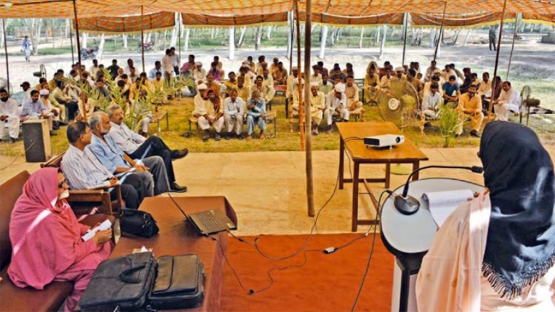Imagine having to tell a poor farmer that a full pail of fresh milk must be thrown out. The problem is, in many parts of the world, this scenario actually should happen more often than it does. It all has to do with how and when a farmer administers veterinary drugs to a dairy cow before milking. Administering drugs to maintain the health and welfare of dairy cattle may be necessary but, if not done properly, chances are that the drug will also be present in the milk. Scientists do risk assessments to determine how much veterinary drug residue it takes to cause harm to humans – not just drugs in a smallholder’s pail of milk but drugs that are given at large livestock facilities that can end up in meat and other animal products, meaning they will not comply with food safety standards. In Pakistan, which has dealt with exports being rejected for noncompliance, the Joint FAO/IAEA Division, in part through the IAEA’s technical cooperation programme, is working on farms and in laboratories to raise awareness of the potential health and trade problems that can result from improper use of veterinary drugs. The goal is to keep all consumers safe and also help the country’s livestock sector meet international food safety standards.
Both smallholder farmers and larger livestock operations use veterinary drugs to treat animals when they are sick or to keep them from getting sick. The higher the threat of disease, the more need to administer drugs. Problems arise when farmers do not have correct advice on what drug to buy, or do not follow instructions on how and when to administer the drugs or how long to wait until the drugs have cleared the animal’s body. Misuse comes with consequences. The organisms causing the disease being treated can develop resistance, which means the farmer will have to increase dosage or find different or more powerful drugs. Or the drugs remain in the animal’s body and these residues, although often at only trace levels, are health hazards and impediments to trade.
During fiscal year 2014–2015, Pakistan’s agriculture sector grew 2.9 percent, but the livestock sector grew 4.1 percent and now contributes more than 11 percent to the national GDP. As agriculture in general and livestock in particular have grown, the sectors have faced some harsh realities, such as the EU’s rejection of 134 food export consignments due to the presence of contaminants. When this happened, it raised concern in Pakistan of the need to provide training for farmers working with livestock but also to improve its food safety control system.
To make this happen, the Joint Division worked together with Pakistan’s Nuclear Institute for Agricultural Biology, National Institute for Genetic Biotechnology and the National Veterinary Laboratories of Islamabad to develop cost-effective methodologies to test for veterinary drug residues. With the support of the Joint Division and the IAEA’s technical cooperation programme, the laboratories have improved their testing capabilities by, for example, optimizing existing facilities instead of buying commercial tools. They have gone through proficiency testing, improved their ISO accreditation, and are authorized to provide eight analytical services to test for compliance – services they make available to the private sector. To date, more than 45 private and public institutions involved in food production and export can benefit from the laboratory testing capabilities.




